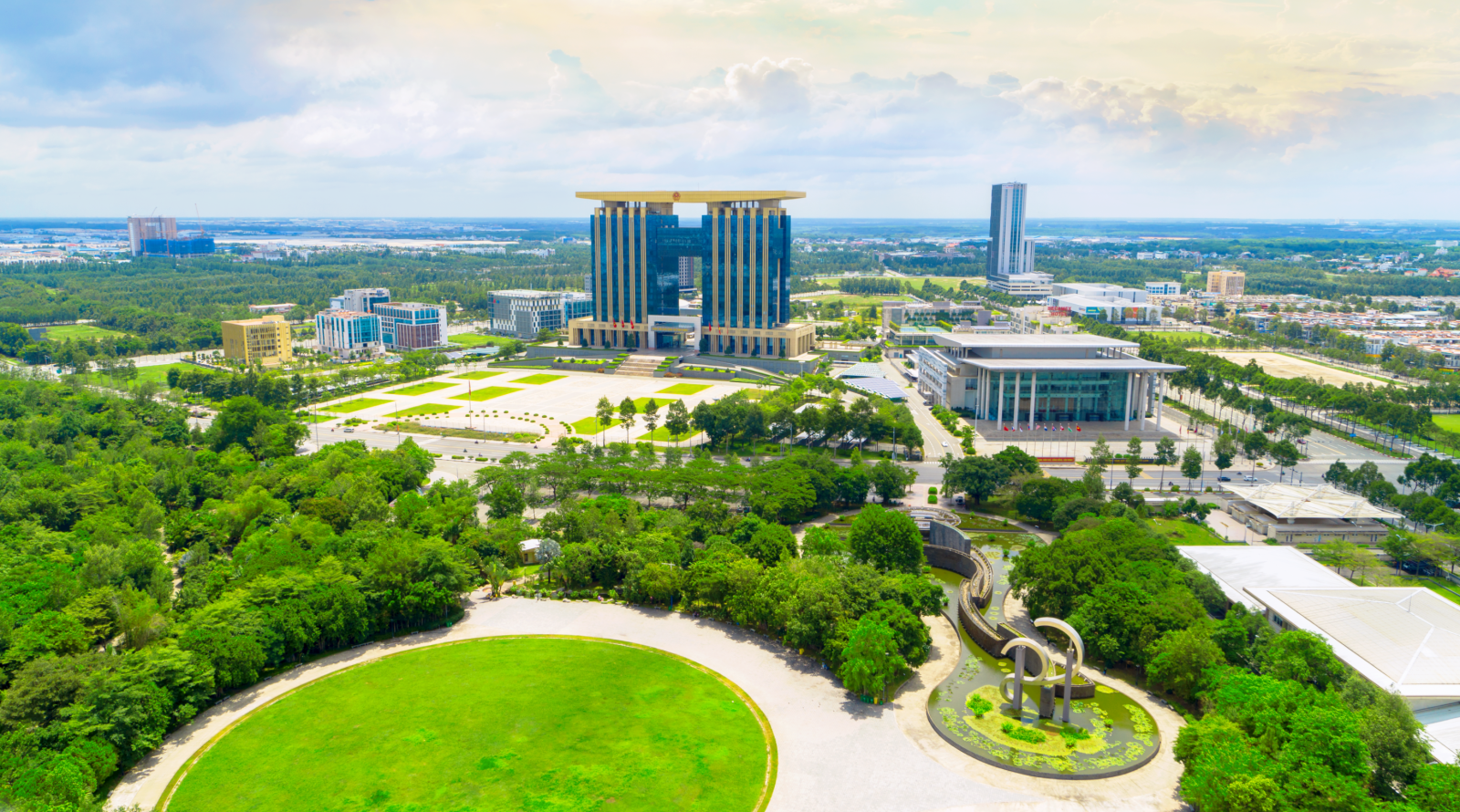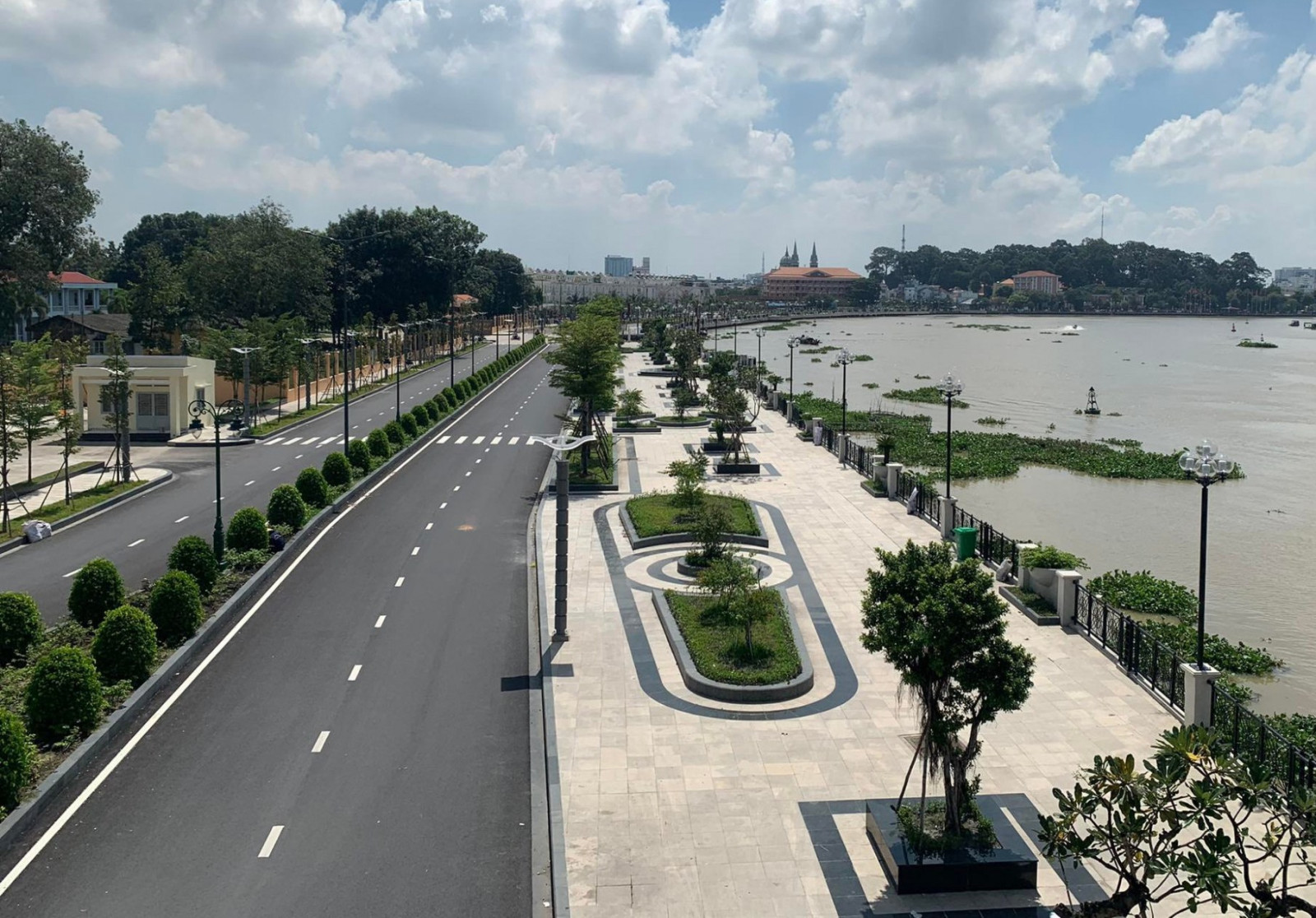Province builds a green space network for sustainable development
In the new period, Binh Duong aims for green growth and sustainable development. According to the draft Binh Duong Provincial Plan for the period 2021-2030, with a vision to 2050, the development of a green space network is one of eight programs the province needs to be prioritized.

The development of a green space network is one of eight provincial programs that need to be prioritized in the new period. In photo: A corner of Binh Duong New City
Meticulous planning
Binh Duong is building green urban areas, developing a green, smart, sustainable, inclusive industrial ecosystem, and promoting green energy conversion. Based on the development of the entire region's transportation network, the space for industrial urban development will be expanded according to the expected Ring Roads 4 and 5, enabling the reduction of load for the central urban area located south of Ring Road 4 as proposed by Resolution 24 of the Politburo.
The province is also accelerating planning to develop industrial urban space on both sides of Ring Road 4, North-South axis according to the industrial - service urban model in Thu Dau Mot, Ben Cat, Tan Uyen, Bau Bang according to a synchronous and unified planning. At the same time, to implement projects rebuilding the southern urban area in Thuan An and Di An to improve living standards for people. Additionally, the province is transforming industrial parks, industrial clusters, production and business establishments in the southern region into high-quality service centers, ecological urban areas, worth-living spaces for people in the region.
Through research and analysis, experts and scientific researchers believe that Binh Duong needs to coordinate to develop spaces and corridors of the Saigon and Dong Nai rivers to become important economic driving forces and biological services of the region. Developing the Dong Nai river axis to become an axis of urban economic development combined with waterway transport, developing the Saigon river axis to become a central axis of public services, ecological services, tourism services, combined with high quality ecological urban areas.
In addition, the province needs to have general development planning and solutions along river corridors to enhance the value of rivers, while responding to climate change problems such as flooding, high tides, sea level rise. In particular, Binh Duong will relocate factories and enterprises in Di An City and Thuan An City to the Northern industrial belt, to rebuild these two gateway cities into livable, green urban clusters, creating an ideal harmonious living environment between services, science and technology, and innovation, right in the heart of the Southeast Region, complementing Thu Duc and Ho Chi Minh City. People living in Thuan An and Di An can easily commute and work throughout the region when the public transportation system is completely connected.
An unified and synchronized ecosystem
According to the draft Binh Duong Provincial Plan for the period 2021-2030, with a vision to 2050, developing a green space network is one of eight programs the province needs to be prioritized in the new period. Namely, the green space network at regional and provincial levels includes arrays and river corridors requiring protection, development and control regulations. The two river corridors of Saigon and Dong Nai, in addition to ecological functions, also include general economic functions such as water transportation, urban landscape, and regional tourist routes.

The Saigon River corridor, in addition to ecological functions, also includes general economic functions such as water transportation, urban landscape, and regional tourism connection. In photo: Bach Dang Walking Street along the Saigon River passing through Thu Dau Mot City
For urban green space networks, such as river and stream corridors, large lakes, green space systems concentrated along green belt corridors, park systems, urban green infrastructure networks... Besides, there is a regional network such as flower gardens, sports fields, community squares, trees...
According to the consultant - National Institute of Urban and Rural Planning (VIUP), green space systems, despite different management decentralization, are perceived as a unified ecosystem, playing a role in maintaining ecological functions and modes of operation in accordance with nature, while optimizing benefits for humans. Natural functions must be preserved, regardless of urban development.
Master-Architect Le Hoang Phuong, Director of Hanoi Center for Architecture and Planning under VIUP, said that to develop a green space network, Binh Duong needs to focus on physical, coordinated and specify policies of the green Binh Duong strategy in promoting the greening of the economy, production, consumption, travel, lifestyle... According to Master-Architect Le Hoang Phuong, Binh Duong implementing this program will be able to attach green conservation and construction to the benefits brought by natural ecosystems (such as creating high-quality tourist areas and urban areas...), thereby creating a stable financial source for conservation, construction and operation of green spaces.
Reported by Phuong Le - Translated by Ngoc Huynh

